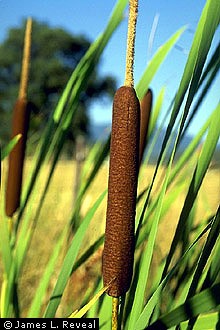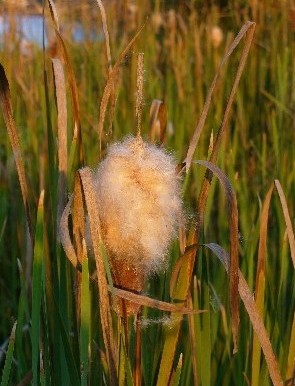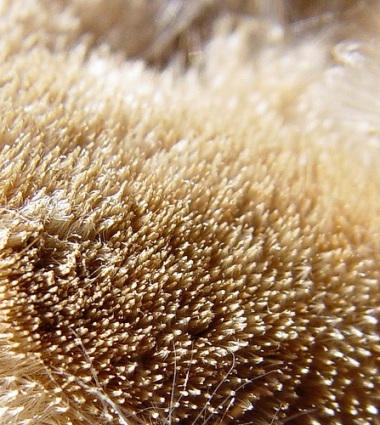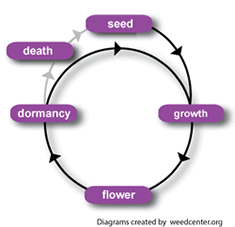The circle of life and the carbon-copy

Typha latifolia is a unisexual plant, yet it typically uses sexual reproduction. The male flower lies directly above the female flower on the same stem. The female flower is the brown velvet, sausage-shaped thing that we usually recognize a cattail by. The male flower is spiky and yellow and it falls off after it sheds its pollen.
The female flower matures before the male flower does. This allows for cross-pollination, where the pollen from one plant is used to fertilize the flower on another plant. The female creates abundant seed production and each spike can produce up to 200,000 seeds! This spike bursts under dry conditions, releasing the fruits. When the fruit hits the water it bursts open releasing the seeds.

T. latifolia relies greatly on water and wind for pollination. Although germination seldom occurs in the water, the water is used for transport of the seeds. Most of the germination occurs when water is very shallow or mud is showing.
Typha latifolia is a
perennial. This means that it can live for many years because it
produces seeds year after year. The typical life cycle is 3 years,
but it can be more. Not only does it spread seeds, it generates
vegetative growth by its rhizomes. Because it can disperse seeds and
spread by vegetative growth, it is
extremely hard to control . In order to kill it, all parts of the
plant that are capable of producing new shoots or seeds must be
killed also.
Back to the marsh



